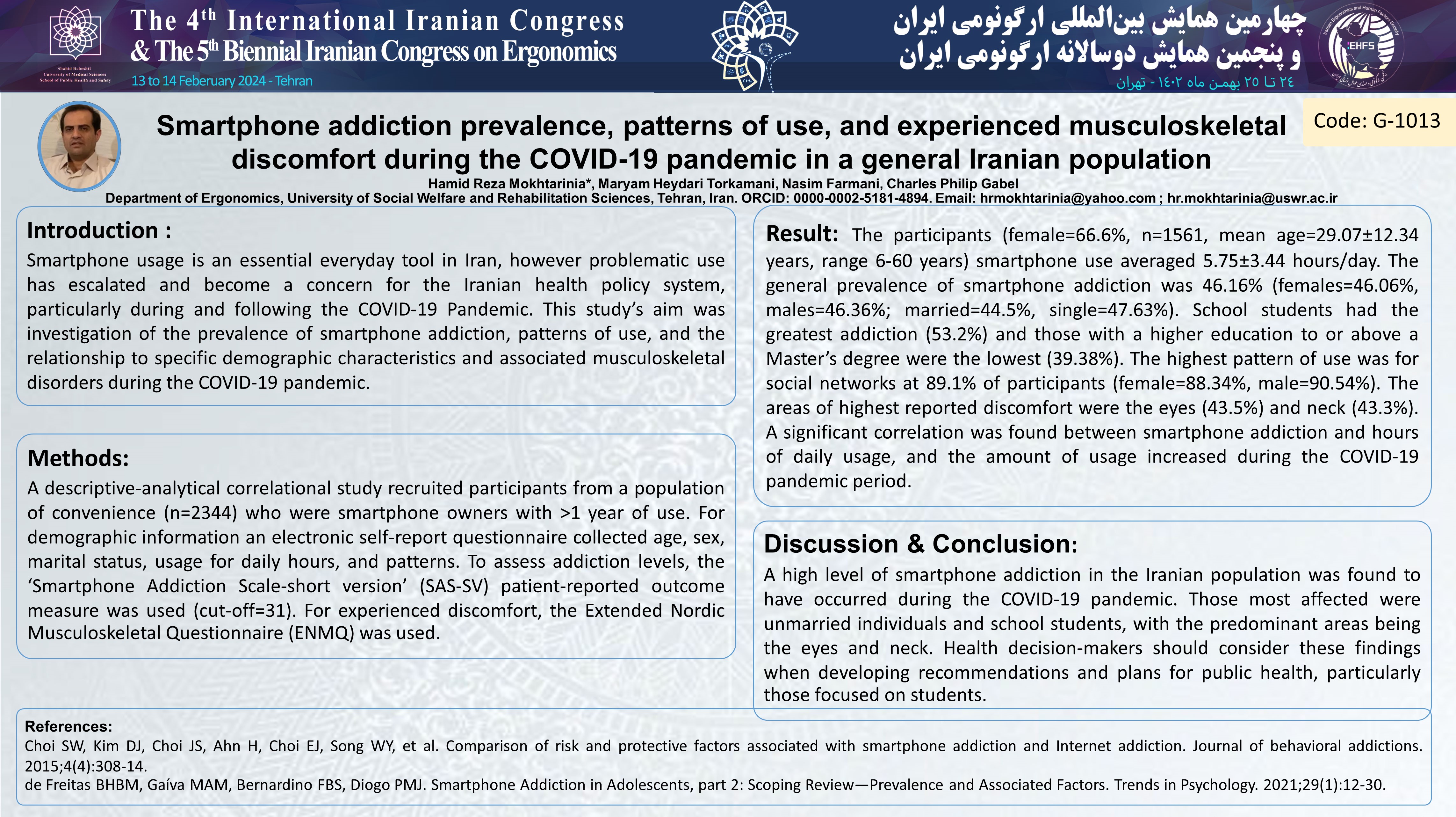Smartphone addiction prevalence, patterns of use, and experienced musculoskeletal discomfort during the COVID-19 pandemic in a general Iranian population
کد: G-1013
نویسندگان: Hamid Reza Mokhtarinia © ℗, Maryam Heydari Torkamani2, Nasim Farmani
زمان بندی: زمان بندی نشده!
دانلود: دانلود پوستر
خلاصه مقاله:
مقدمه
Smartphone usage is an essential everyday tool in Iran, however problematic use has escalated and become a concern for the Iranian health policy system, particularly during and following the COVID-19 Pandemic. This study’s aim was investigation of the prevalence of smartphone addiction, patterns of use, and the relationship to specific demographic characteristics and associated musculoskeletal disorders during the COVID-19 pandemic.
مواد و روشها
A descriptive-analytical correlational study recruited participants from a population of convenience (n=2344) who were smartphone owners with 1 year of use. For demographic information an electronic self-report questionnaire collected age, sex, marital status, usage for daily hours, and patterns. To assess addiction levels, the ‘Smartphone Addiction Scale-short version’ (SAS-SV) patient-reported outcome measure was used (cut-off=31). For experienced discomfort, the Extended Nordic Musculoskeletal Questionnaire (ENMQ) was used.
یافتهها
The participants (female=66.6%, n=1561, mean age=29.07±12.34 years, range 6-60 years) smartphone use averaged 5.75±3.44 hours/day. The general prevalence of smartphone addiction was 46.16% (females=46.06%, males=46.36%; married=44.5%, single=47.63%). School students had the greatest addiction (53.2%) and those with a higher education to or above a Master’s degree were the lowest (39.38%). The highest pattern of use was for social networks at 89.1% of participants (female=88.34%, male=90.54%). The areas of highest reported discomfort were the eyes (43.5%) and neck (43.3%). A significant correlation was found between smartphone addiction and hours of daily usage, and the amount of usage increased during the COVID-19 pandemic period.
نتیجهگیری
A high level of smartphone addiction in the Iranian population was found to have occurred during the COVID-19 pandemic. Those most affected were unmarried individuals and school students, with the predominant areas being the eyes and neck. Health decision-makers should consider these findings when developing recommendations and plans for public health, particularly those focused on students
واژگان کلیدی
Smartphone, Social Networking, Pain, Prevalence, Risk Factors.
دیدگاه ها (0)
ارسال یک دیدگاه
ارسال دیدگاه توسط مدیریت بسته شده است.
